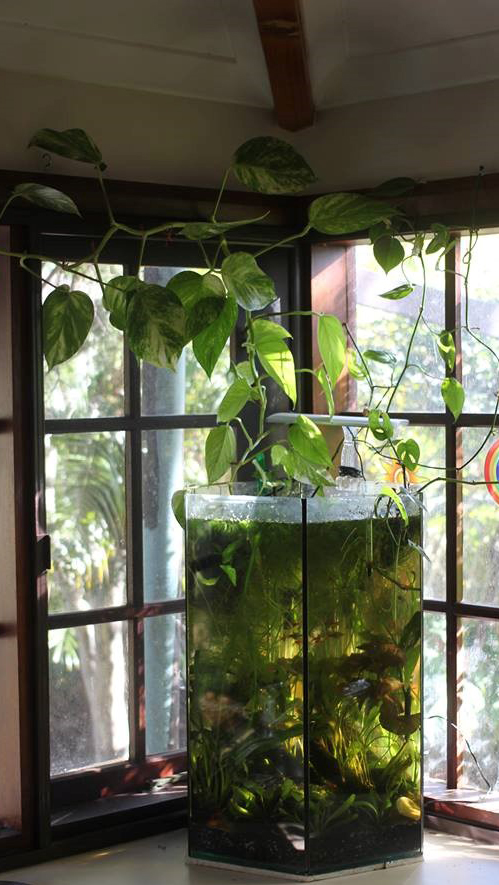Before we bring an animal into our care, the first thing we should ask ourselves is if we can offer the pet a more comfortable, safe, and stimulating life than one they might experience in the wild. Some pets are suited to a domestic life; enjoying an abundance of food, shelter, and socialisation with their owner. Other pets lack natural stimulation, and can express this deficiency through destructive or depressive tendencies – far from desirable for both pet and owner. One only has to observe the utter hopelessness of a fighting fish entombed in the equivalent of a locked closet, to understand that fish belong in the latter of the two types of pets. With this in mind, the concept of aquariums can seem a little depressing.
In the natural world, fish traverse great distances through wilderness, hunting and being hunted by a dense and diverse range of competitors, and working day in, day out, to maintain their piece of existence. To then be ‘domesticated’; suspended between gravel and glass in fouling water with little or no stimulus is at the best of circumstances a form of limbo. At the worst, of a form of hell. But it does not have to be this way! Aquariums can be a setting of comfort and beauty, a stimulating home well superseding any system found in nature. We can consciously replicate a natural environment, using a dense and diverse variety of plants to create a tank as much a terrarium as an aquarium, where fish can live out their days truly engaged with their surroundings.
The Walstad tank, pioneered by Diana Walstad (author of Ecology of the Planted Aquarium) is a self-maintained ecosystem that achieves an ultimate fish haven. Not only do these ‘tanks’ look beautiful, lined with lush green growth that provides an optimal environment, but they are also more practical than high-tech tanks, taking away much of the maintenance and expenditure. The Walstad tank is, in essence, a nod to nature and the ingenious complex interactions that constitute our environment. In ignoring ecological principals (as with traditional aquariums) we create work for ourselves that might otherwise be undertaken by nature. By giving nature the means to reclaim a landscape and mould it to its own accord, we in turn receive the opportunity to observe, learn, and co-operate with the clever forces of ecology.



For those interested in designing an aquatic system founded on the principles of nature, five factors must be taken into account: plants, nutrient recycling, microbial life, species diversity and natural selection. Plants are the backbone of any aquatic ecosystem. They maintain the water quality by absorbing excess nutrients, CO2, and other toxic substances, and function by recycling them into plant biomass that supplies both food and shelter for fish as well as oxygenation and cleaning of the water. Plant food is not derived directly from uneaten fish food and waste, but rather from the end products made available through the decomposition process. Said process is undertaken by the abundant microbial life that works in symbiosis with fish and plants. This microbial life requires dirt based substrate, rather than the gravel to thrive. Species diversity ensures ecosystem survival. Different sizes, growth rates, colours, and relationships between other plants and animals will create a space that is active year-round. As plants both compete and aid each other’s success, environmental conditions can overwhelm some plants. The system is in a state of constant evolution, leaving the strongest and best suited to succeed. This natural selection for the fittest and strongest ensures the system will gain resilience and persist with time.
The Walstad tank relies on environmental conditions that mimic nature, many of which are not usually available in a sheltered glass tank. These special tanks need access to natural sunlight (at least two, but no more than four hours of direct sunlight), external food sources and constant water movement (effectively supplied by an air stone or sponge filter). They work best with prior research and thoughtful consideration into the placement, establishment, maintenance of, and additions to, the tank system.
It is a cruel mistake to conquer the wild and domesticate its inhabitants. This is a lesson that has been reiterated through history, as ignorance is phased out and human empathy is extended to encompass all living things. The aquarium trade must go in the same way as the brutish menageries of past eras. With the lakes drying up, it is now possible for us to offer a new home where fish are not merely household accessories, but are celebrated as the wild animals they were always intended to be.
By John Yaxley
This first appeared in print volume 88 edition 5 HOME.

